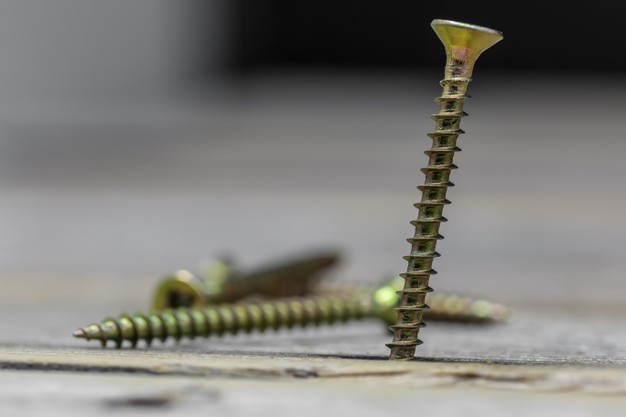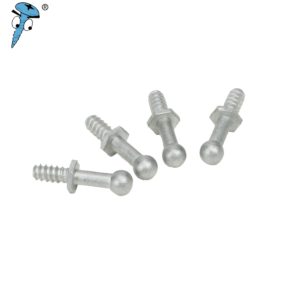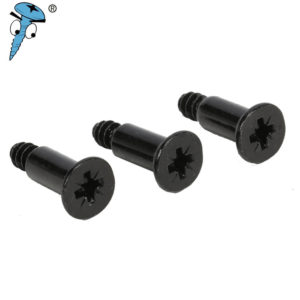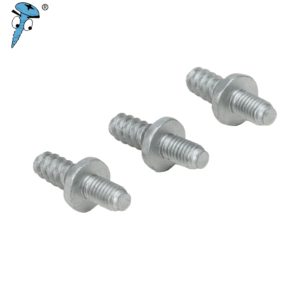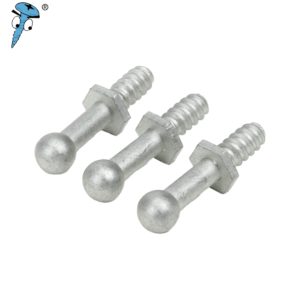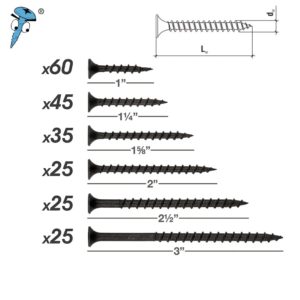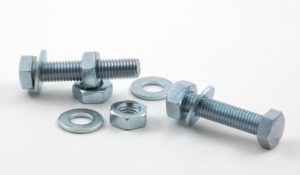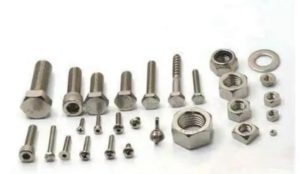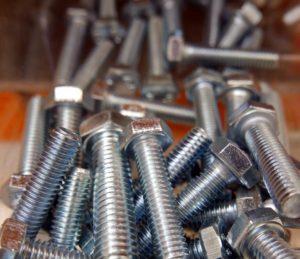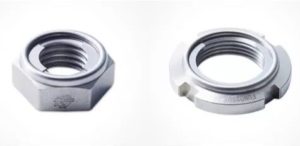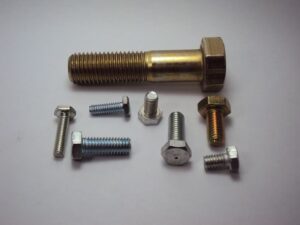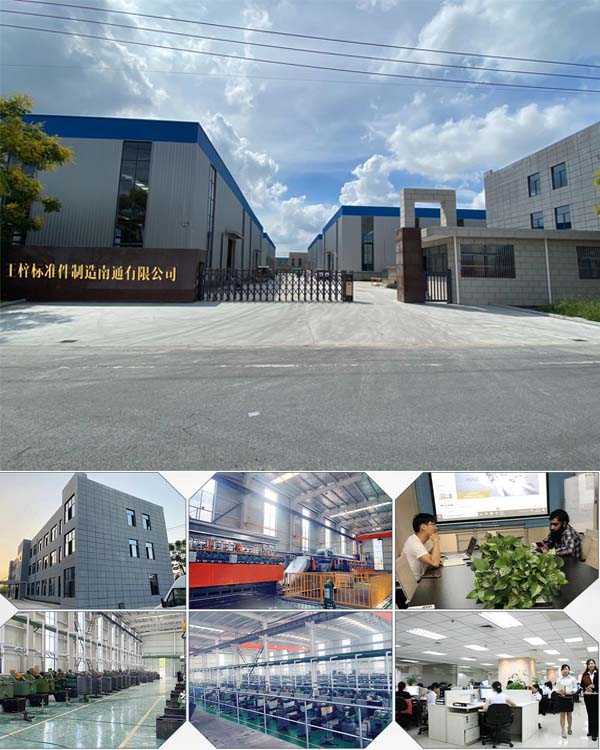Prince Fastener:How to Choose Furniture Screws
What type of furniture screws should you use in your production process?
It’s easy to get confused. Screws are undoubtedly a very common fastener used in woodworking, but many options are. Wood screws are easy to create clamps quickly and clamping forms, attach cabinet and furniture components, mount hardware and trim, and much more. Screws form strong joints between parts made of solid wood, plywood, and other panels without the need for cutting fine work. From head to drive, from point to line, from coating to coating, our authors provide comprehensive education on the various options available in the modern screw world. Or adhesives (unlike adhesives, screws are removable, so you can disassemble anything you build). Screws are also suitable for reinforcing parts assembled by traditional joinery methods, such as nailing tenons in the mortise and tenon.
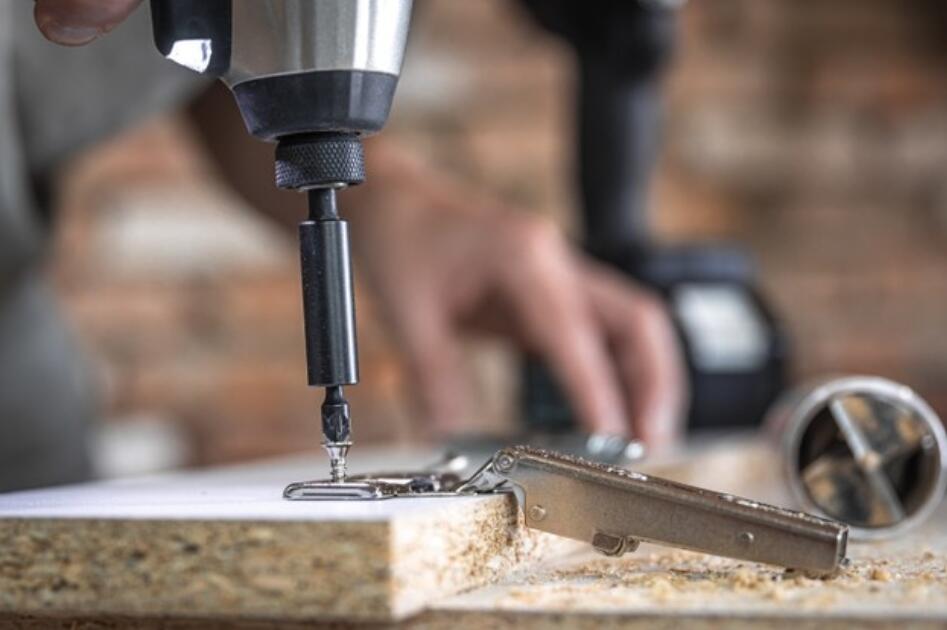
Choosing the right wood screw used to be as simple as selecting the right size and length of zinc or brass screw for the job at hand. But in recent decades, technological developments in the construction and wood products manufacturing industries have given rise to a vast array of new screws. With so many choices, it’s bound to make the sofa factories head spin!
The design and technology of each screw. Hopefully, this exploration will give you a better ability to choose the right screw for the project at hand the next time you need one.
Screw types and materials.
Brass, Bronze, Aluminum, and Other Steel Screws Brass, bronze, and aluminum steel screws are useful for woodworking and interior DIY projects. They are strong, reasonably priced, and large. But the old tapered steel wood screws were a pain. Many woodworkers turned to them decades ago when inexpensive drywall screws became readily available. Made of hardened steel, drywall screws penetrate wallboard and studs and can be accessed quickly without drilling pilot holes in advance. However, they are relatively fragile and can break under high driving forces or pressure, making them poor for projects requiring sturdy construction.
Prince Fastener:2022 Fastener Price Trend Forecast
A different type of screw has largely replaced the traditional tapered and drywall nails. The tips and threads of “production screws” are sharp and strong enough to penetrate hardwoods and artificial materials – even some metals. Their heads and handles are durable enough to withstand the high torque generated when driven by an electric drill or impact driver, as well as the punishing stresses that furniture or cabinet components to which the screws are attached can face. Hardened steel screws, including GRKFasteners, SPAX, PowerPro, and Saberdrive, are often sold as “construction screws” or “multi-purpose screws.
Unless they are specifically plated/coated for exterior use, hardened steel screws are not particularly weather-resistant and are reserved for interior projects when possible. Deck screws are screws produced by plating and coating to increase their corrosion resistance. They are ideal for outdoor projects such as game rooms or decks. For greater rust and corrosion resistance, two good screw materials are silicon bronze and stainless steel. Chrome stainless steel screws are weaker than regular steel screws and come in two popular grades. Grade 305 stainless steel is suitable for coated deck screws with insufficient corrosion resistance, and Grade 316 (sometimes called marine stainless steel) is suitable for projects exposed to salt spray or where corrosion is likely to be severe.
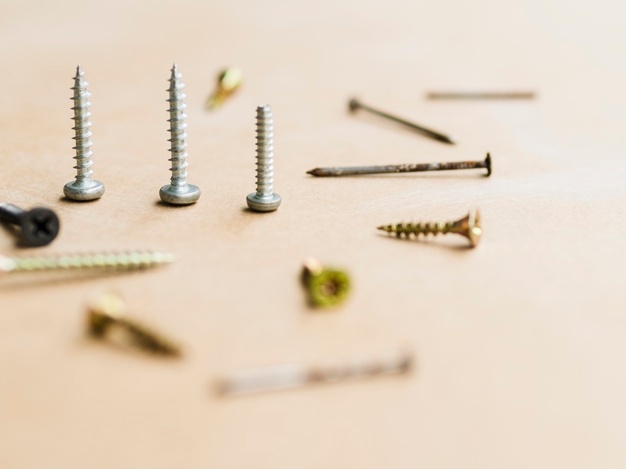
Screw head types
Regardless of the material, size, or length of a screw, the shape of its head can have a significant impact on how well it works in any given application. Head designs fall into two groups: flat against the work surface and those that stand proud. In the first group, trimmer head screws and flared head screws are designed to sink automatically, except in hard materials such as rosewood and ebony. Flared head screws allow for quick access and good retention in most materials. Trimmer head screws are a good choice when you need only moderate retention and don’t want the fastener’s head to appear too prominent. They are better than nails when going into pre-drilled holes for setting door frames or installing trim and moldings: trim head screws are less likely to split thin or delicate wood parts.
Traditional flathead and oval-head screws give the project a clean look but require a conical recess to be drilled. In contrast, most flat head production screws are self-sinking: they create a recess that makes the head flat. The company’s unique “funnel head” screw is designed for veneered plywood and coated materials such as melamine. It has double serrations and is so thin that it can cut into delicate surfaces without tearing.
Screw head types that work with surface pride include the traditional round head, pan head, and cheese head (also called filler head) screws. Each has a relatively small head with a flat bottom close to the surface of the workpiece. This provides a reasonable amount of retention in hardwoods, but the smaller head tends to crush the wood at the surface in soft species. The effective fixation of the screw is reduced when the connected workpiece is under stress. Screws with larger heads have more contact area with the work surface and offer greater resistance to penetration and pull-out.
Truss head screws (also known as “mushroom head” screws) have a head similar to a metal worker’s pan head screw, but the entire head is flatter and larger in diameter. This is a good choice for mounting hardware such as drawer slides. You want to have good contact with the hardware, but you need not cock the head too high. Washer head screws look like regular round head screws with a small washer under the head. The added surface area under the head prevents them from sinking too deep, especially when using electric drives.
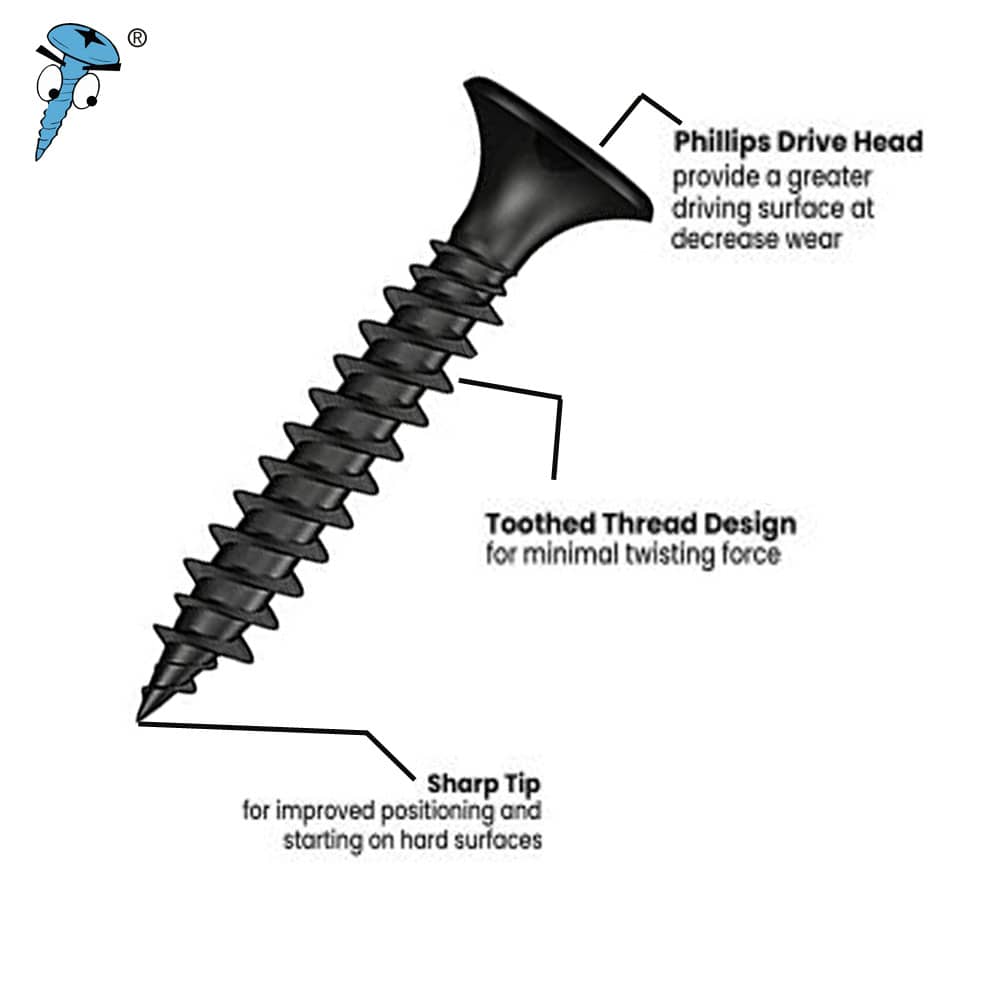
The appropriately named “super washer head” screws have a larger diameter washer head. They are suitable where two parts are joined but must remain adjustable, such as attaching a drawer front to a drawer box. Wafer head (and flange head) screws have large, flat coin heads. Most wafer heads, including Fastcap’s “PowerHead” screws, are not only large but thin, giving them strong retention and a low profile.
13 Different Types Of Fasteners
Screw drive types
Unless building period-style furniture manufacturer, few woodworkers still use traditional tapered slotted head wood screws because they slide easily off the screwdriver or driver head and “stick out” easily, especially when using cordless drills or impact drivers.
However, many woodworkers still use Phillips head screws, which went into production in the 1930s because their horizontal slots automatically aim at the screwdriver’s tip. They tend to stand out, especially when used with an electric driver. But a little-known fact is that Henry Phillips did this deliberately to help speed up automotive production, which helped prevent workers from over-tightening Phillips head screws with the early electric drivers, which could not adjust for torque limits. Today’s woodworkers tend to reduce protrusion by carefully setting the clutch on electric drivers. POZIDRIV is a modern variation of the cross driver that was developed to reduce protrusion while maintaining a central position. It is a good choice for large/long screws that require high torque when driven into hard materials.
While there are dozens of modern drives available on screw fasteners (Hex. Polygon drive. Wrench head, etc.) ), there are two drive styles that have become particularly popular in recent decades. Robertson square and TORX star drive. The square “Robertson” drive was developed in Canada at the beginning of the 20th century, but Peter L. Robertson’s reluctance to license its screws to industrial users (such as Henry Ford) made it unpopular in the United States. In the last few decades, companies like online fastener retailer Mcfeely started marketing them to woodworkers. With their distinctive six-point star pattern, TORX drive screws appeared in the late 1960s and quickly became a popular production fastener for everything from cars to motorcycles to consumer electronics. Most woodworking fasteners driven by TORX are deck screws, but this drive is increasingly popular for general construction and cabinetry screws. Robertson is available in six sizes, but 1.25 and 3 (green). Most TORX drives are from 15 to 20.
Both Robertson and TORX drivers have two features that make them a prime choice for woodworkers using electric screwdrivers: fit and resistance to convexity. The fit is the ability of the drive head and drive slot to form a temporary connection. Once you place the square or star-shaped drive screw on the tip of the drive bit, your tip, you can drive it without having to grab the screw. This not only frees up your extra hands but lets you put the screw in all sorts of hard-to-reach places. The TORX and Robertson drivers have a deep slot where the drive head fits snugly together. The slot has an almost vertical sidewall, so there is little need to apply downward pressure to the driver to keep it engaged. This greatly reduces the chance of cam disengagement and reduces wear and damage to the drive.
It is worth noting that there are two other types of screw drives. Oz square and outlaw drives. Oz square (also known as combination drive) is a hybrid drive that combines a #2 cross and #2 square drive in a screw head slot. You can drive them with Phillips or Robertson bits, but the special pozisquare (combination) bits give you a better fit and resistance to protrusion.
Concealed or hidden screw heads.
Screws can provide good decorative detail to a project: imagine a walnut cabinet or a mahogany jewelry box with a row of shiny brass screws dotting the edges. However, hiding them or covering them is an option when you don’t want to show the screw heads. An easy way to disappear flathead screws is to set them in countersunk holes with flush-edged wood plugs at the top that matches the workpiece. You can drill the pilot hole and the hole one step at a time or use a special drill to do both tasks simultaneously. starbornindustriesproplug system is a great kit designed to make the whole process fast and easy. It includes a special countersink/sinker bit, a glue bottle specifically designed to inject glue into the hole, screws, and tapered corks (for a dozen different wood species).
Hidden screw heads
If you’d rather reinforce the presence of fasteners than hide them altogether, decorative domes or button plugs, or screw caps are good ways to go. You can see the various types in the photos below. Decorative dome plugs can be glued to drilled holes while keeping the screws hidden and providing a beautiful detail. Craftsman hole plugs are sized for 3/8″ holes, but they have square heads and pyramidal tops, similar to the chisel ends of traditional small tenons. For a modern style of woodwork, you can try metal hole caps in various metal finishes. I like the look of black anodized aluminum plugs in a blond wood finish. Fastcap plastic screw caps are inexpensive, quick to install, have small tabs, and snap into the recesses of square-driven flathead screws. Whitecaps are an option for camouflaging screws in melamine cabinets if future removal is required.
Screw points and threads.
The tips and threads of wood screws have a big task to accomplish. They must penetrate the surface of the wood and then pull into the screw without causing the wood to crack or split. Once pulled in, the threads must be securely held in the wood so that even under pressure, they will not be pulled out or separated from the connected parts. A guide hole is needed when old tapered wood screws go into all materials except soft ones: their points are relatively blunt, and their shallow threads do not provide much holding force.
In contrast, production. Construction and deck screws have sharp tips and threads with diameters larger than the screw handle itself. This allows them to penetrate most materials without the need for pilot holes, saving a lot of installation time! There has been no more innovative area in the development of wood screws than thread and point design in recent years. Let’s take a deeper look at these two features.
Pointed head
A good screw point quickly bites into a non-trial drilled surface, quickly pulls down on the screw, and creates an entry hole for the screw’s handle and threads. Most production/construction/deck screws rely on a Type 17 screw point to do this job. This tip can even penetrate hard materials – and your fingers – so are careful when handling it! The self-tapping slot behind the tip of the drill creates a hole in the surface that directs the debris toward the handle of the screw. This helps pull the screw in and reduces outward pressure that can cause splits and bumps. Some SPAX construction screws feature a 4CUT with squared-off ends. When the screw is driven, the wood fibers are pushed to one side instead of splitting, thus replacing the notched bit.
Top 10 Self-Tapping Screw Manufacturer In China
Threads of furniture screw
Once the tip of the nail pulls the wood screw into the material, the rest of the screw will continue to be driven by the threads. Conventional wisdom has always held that fine-threaded screws are suitable for hardwood oak, cherry, maple, birch, etc. Coarse threaded screws drive and hold better in softwoods, plywood, and laminates (particleboard, MDF, etc.). However, new thread designs have changed the rules, making many production/construction screws suitable for a wide range of materials and applications.
Some threads, including guide screws and horizontal cut threads, are designed to reduce the torque required to drive the screw. In some special threads, a rolling shoulder thread above the conventional thread slightly enlarges the hole when driving the screw, making it easier to rotate the screw handle and helping to increase the clamping force between connected parts. Here are some of the new thread designs and their expected benefits
Deep threads with an extra-long slot in the point.
Lead screw thread (funnel head screws). The spiral thread above the top quickly pulls the screw into the wood.
Cross-cut thread (outdoor wood screws). Double threaded design with standard male and female threads that help reduce friction at the screw root.
Threaded (screw; pocket hole screw). A thick, pointed male thread and a fine female thread. Forms a multi-purpose screw that provides good holding power and less stripping in all woods and panels.
Threads (GRKR4 and RSS screws). Regular threads have a knurled shoulder above.
Reverse threaded part (Starborncap-Torxd deck screws). Deck screws have a reverse thread under the head to help prevent denting and mushrooming (raised areas around the screw head.) A similar reverse thread on SPAX stainless steel deck screws helps prevent screw retraction as the wood dries.
European screw threads. Melamine, particleboard, and MDF are notorious for their poor holding power. In the 1970s, the German hardware manufacturer Häfele introduced an oversized Confirmat screw designed specifically for building ready-to-assemble European-style furniture screws and cabinets. The Confirmation (or similar Firmit) fastener functions like a threaded steel nail to form a rigid connection between parts.
W-Cut threads (GRKRSS and cabinet screws) and serrated threads (Saberdrive and SPAX screws). Serrated-like edges are cut into the threads to cut wood like a circular saw blade.
Coatings of furniture screws
In the final step of manufacturing, most steel and wood screws receive some plating (metallurgical process for bare metal screws) or coating (for bare metal screws or screws that have been plated). Screws are plated and coated for three reasons.
1. To prevent corrosion.
Ordinary steel screws rust quickly when they come in contact with water. Plating helps keep the screw itself from rusting and prevents the rust on the screw from contaminating the surrounding wood. A common coating on wood screws is bright zinc, primarily a decorative finish that provides only a small amount of corrosion resistance. Zinc screws will develop dark white corrosion (“white rust”) unless protected by a clear coat or colored chromate (such as yellow zinc). Bright gold zinc screws are more resistant to corrosion than bright zinc, so this coating is common on construction screws. Black oxide (black phosphorus) coatings prevent steel screws from rusting and staining wood but offer little protection against severe corrosion.
Plating processes, such as electroplating and hot dipping, have traditionally provided good rust protection for screws, but the modern deck and construction screws are also available with high-tech coatings or plating/coating combinations for outdoor environments.
Blue-Kote (Kreg pocket hole screws). Blue screws with three layers of rust protection; weather resistant.
Nocorodepluspro-master wood screws (sold by McFeely) are nearly 20 times more corrosion resistant than standard yellow galvanized coating; they work well with most outdoor woods.
Epoxy coated. StarbornDeckfast epoxy coated screws are corrosion resistant and come in four colors (gray, green, red, and brown) to match treated wood.
Climate. GRK coating consists of six zinc and polymer layers; approved for use on highly corrosive pressure-treated wood.
HCR. SPAX’s “High Corrosion Resistance” screws have a double barrier coating system with an electrified base coat and a special organic topcoat designed to extend the life of the screw, even when used with treated wood.
PowerPro brand screws have multiple layers of zinc and polymer-based coatings. ACQ, CA, and CCA-treated woods are recommended, along with cedar and redwood, as they will not stain the wood.
2. Beautify the appearance.
In addition to bright silver zinc, other colors are available. Brass plated screws mimic solid brass screws but are stronger and less costly. Black oxide plated screws have a look that complements modern engineering.
Some screws are coated with epoxy paint on the head to help hide fasteners without counterbores and blocking. White or sand-colored (brown) heads match the color of white or almond melamine panels. Starbuck’s HEADNOTE stainless steel screws have a head color that matches commonly used decorative panels of wood, polyvinyl chloride, and composite materials.
3. Reduce friction.
The better lubricated the screw surface, the easier it is to drive and the less force required to drive. When encountering knots or dense grain, sliding screws are less likely to protrude, break, or jam.
You can lubricate the screws yourself by wiping them with a candle or beeswax before driving them, but it is much easier to buy screws that have been treated with a lubricating coating. Berenson applies a thin wax coating to its plain and galvanized screws, reducing friction without leaving any residue. square-XDrive screws and Highpoint screws have a specially formulated dry coating that is easier to drive and prevents surface corrosion (recommended for indoor applications only). Prince Fastener provide construction screws are coated with a friction-resistant coating over a corrosion-resistant epoxy resin coating for outdoor projects.
